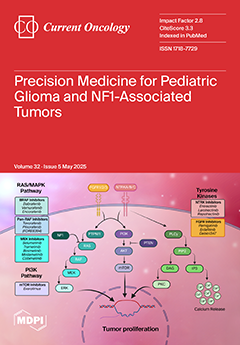Background: Cancer survivors who do not engage in regular physical activity often experience persistent psychological distress and fatigue, which can significantly impact their quality of life. While handgrip strength (HGS) is recognized as an indicator of overall health and physical resilience, the combined role of HGS and physical inactivity in predicting psychological distress and fatigue in this population remains unclear. This study aimed to examine the relationships between self-reported physical inactivity, HGS, and psychological distress, specifically depressive symptoms, anxiety, and cancer-related fatigue (CRF), in physically inactive cancer survivors. Methods: This cross-sectional study included 42 physically inactive cancer survivors (mean age = 63.2 years, SD = 8.96) recruited from the Cancer Institute (IRCCS) in Bari, Italy. Physical inactivity was quantified based on self-reported weekly physical activity minutes, with all participants engaging in less than 150 min per week. The participants underwent HGS assessment and completed validated psychological measures, including the Beck Depression Inventory (BDI), the State-Trait Anxiety Inventory (STAI-Y1 and STAI-Y2), and the Fatigue Severity Scale (FSS). Results: Bivariate correlations were examined via Spearman’s rank correlation coefficients, and multiple linear regression analyses were performed to identify independent predictors of psychological distress and fatigue, adjusting for covariates such as age, sex, cancer type, and time since treatment completion. Both lower HGS and greater physical inactivity were significantly correlated with greater depressive symptoms (HGS: ρ = −0.524,
p < 0.001; physical inactivity: ρ = −0.662,
p < 0.001), greater fatigue severity (HGS: ρ = −0.599,
p < 0.001; physical inactivity: ρ = −0.662,
p < 0.001), and increased trait anxiety (HGS: ρ = −0.532,
p < 0.001; physical inactivity: ρ = −0.701,
p < 0.001). No significant associations were found between physical inactivity or HGS and state anxiety (
p > 0.05). Multiple regression analyses confirmed that both HGS and physical inactivity independently predicted depressive symptoms (HGS: β = −0.435,
p = 0.009; physical inactivity: β = −0.518,
p = 0.002), trait anxiety (HGS: β = −0.313,
p = 0.038; physical inactivity: β = −0.549,
p < 0.001), and fatigue (HGS: β = −0.324,
p = 0.033; physical inactivity: β = −0.565,
p < 0.001), even after adjusting for covariates. Low physical activity and reduced muscle strength independently predict psychological distress and fatigue in cancer survivors. Conclusions: These findings highlight the potential exacerbating role of physical inactivity in both physical and psychological vulnerability, underscoring the need for interventions promoting regular exercise. Integrating strength assessments and structured physical activity programs may be key strategies in survivorship care to improve mental well-being and overall quality of life.
Full article






